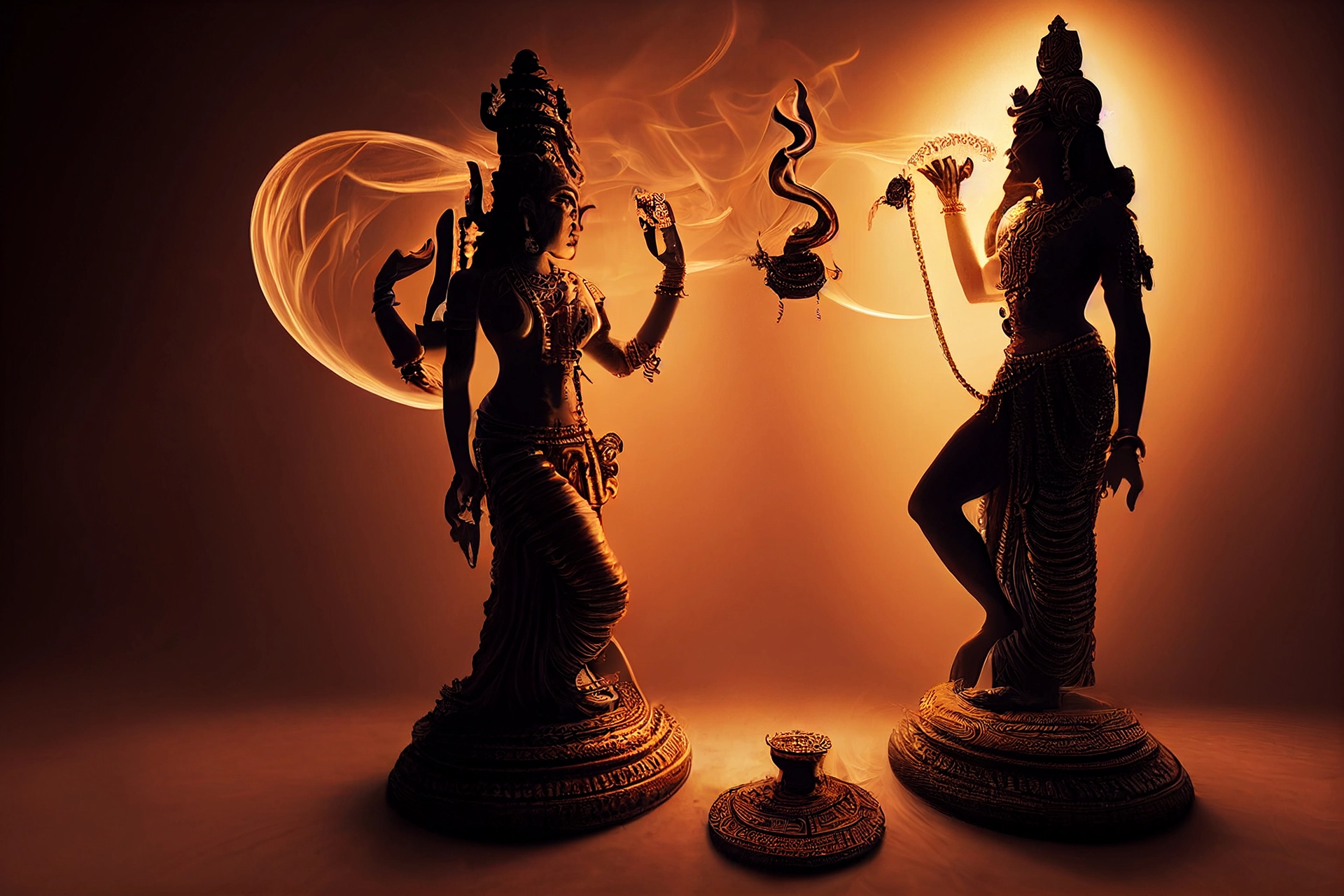Unveiling the Mysterious Beginnings of Kundalini: Shiva and Shakti
In Kashmir Shaivism, there exists a captivating concept known as “spanda.” It speaks to the pulsing, vibrating nature of the universe, where life itself feels like a rhythmic dance. If you’ve ever felt the pulsating energy in the world around you, whether through music, nature, or the art of dance, you’ve experienced a touch of this concept.
Spanda symbolizes the cosmic dance of Shiva and Shakti, representing the interplay between consciousness and the material world. It captures the essence of the universe’s creative energy, filling every moment with a vibrant pulse. To visualize spanda, picture the dance of Shiva and Shakti, with consciousness seeking to express itself through the rhythm of life.
This dance of Shiva and Shakti is not just about cosmic energy but about reconnecting with our innate flow. In modern terms, we often talk about being “in the zone” or experiencing “flow.” But what if this flow wasn’t just a momentary state during creative endeavors or athletic performances? What if it became a constant state of being, with every moment reflecting the harmonious dance of Shiva and Shakti?
The Disconnect from Nature and the Path to Reconnection
In the ancient texts of Hindu mythology, the story of Shiva and Sati (the earlier incarnation of Shakti) provides insights into the challenges of losing touch with nature and the cycles of life. Brahma, the creator god, witnessed the world’s downfall as people became obsessed with power and civilization, losing their connection with the natural rhythms of the universe. This story emphasizes the importance of staying rooted in nature and embracing the chaos and spontaneity of life rather than rigidly adhering to order and control.
Shiva and Sati’s journey reminds us to find balance in our lives. Their story illustrates the consequences of rejecting the natural flow and emphasizes the need to reconnect with the cosmic dance. The legend of Sati’s sacrifice and the dispersal of her body parts across India reminds us that the divine presence is everywhere, waiting for us to rediscover it.
Awakening the Kundalini and Reuniting with the Divine
The concept of Kundalini plays a central role in the reunion of Shiva and Shakti. Kundalini represents the coiled energy at the base of the spine, often depicted as a serpent. Awakening this energy signifies the journey toward spiritual enlightenment and the reuniting of Shiva and Shakti within us.
By chanting sacred mantras and practicing spiritual disciplines, we can unlock the dormant energy within us and allow it to rise through the chakras, ultimately reaching the crown of the head, where Shiva resides. This journey mirrors the cosmic dance of Shiva and Shakti, as consciousness and energy merge to create a harmonious flow.
In the symbolism of the Shiva linga and the Yoni, we see the representation of this cosmic union. The linga, a beam of light, symbolizes consciousness, while the Yoni represents the receptive energy of Shakti. Together, they illustrate the cosmic dance, reminding us that every aspect of the universe is interconnected.
Finding the Flow in Everyday Life
The beauty of spanda and the dance of Shiva and Shakti is that it invites us to find the flow in every aspect of our lives. Whether at work, with family, or navigating the chaos of daily life, the idea is to maintain a sense of harmony and connection. This continuous flow reminds us that we are part of something greater—a pulsating, vibrant universe that invites us to dance along with it.
So, as we journey through life, let’s remember to embrace the cosmic pulse, dance to the rhythm of Shiva and Shakti, and find the flow that connects us to the divine energy within and around us.

